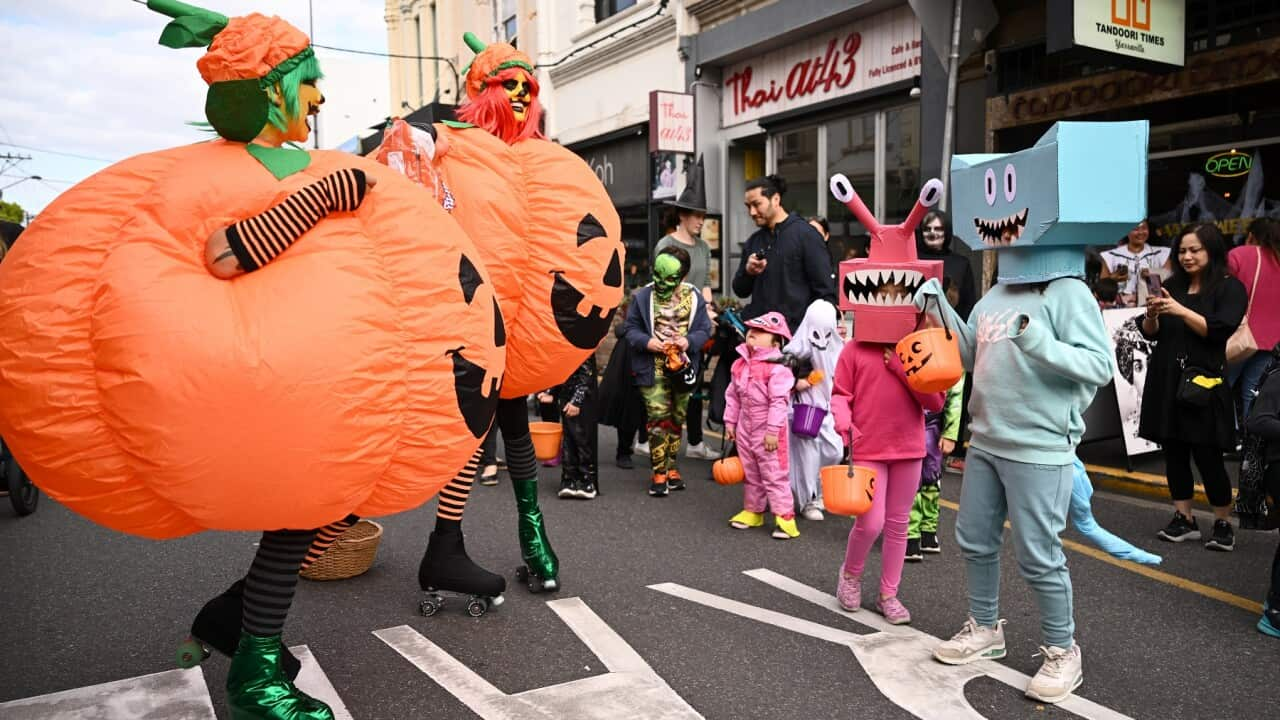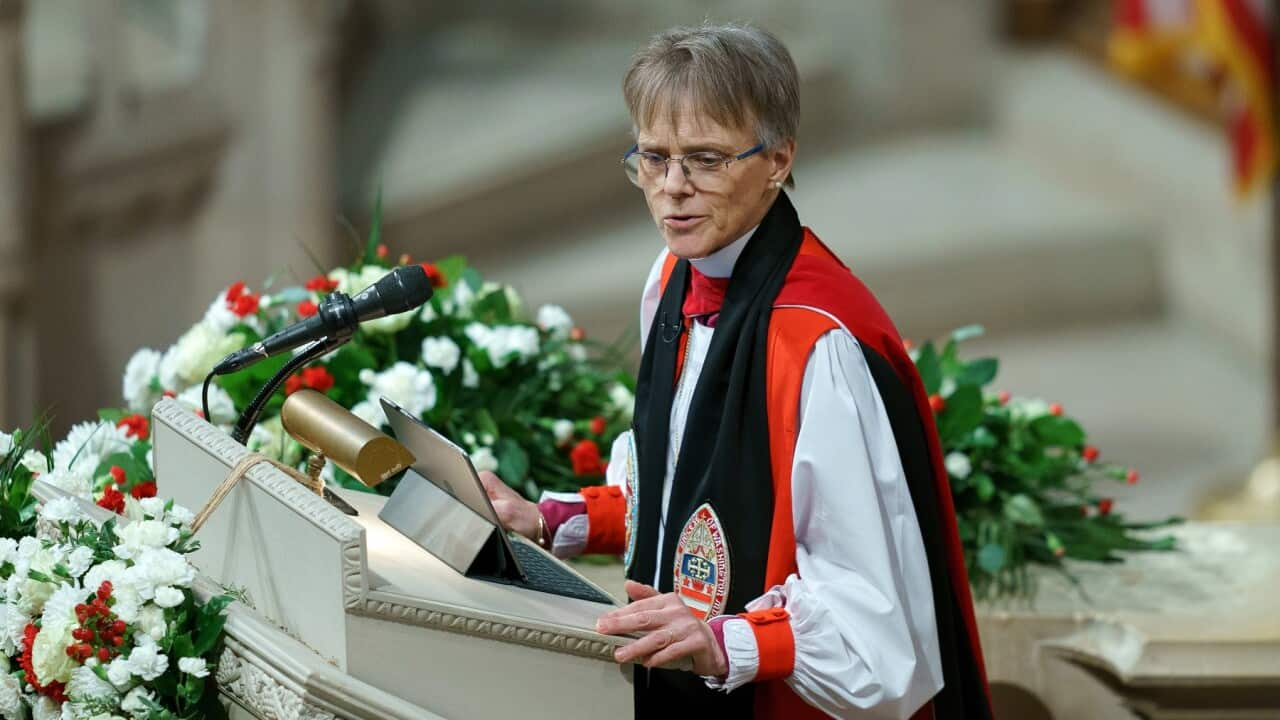TRANSCRIPT
Darkness creeps across the neighbourhood.
In the shadows, strange figures gather and approach the house.
A knock on the door echoes through the rooms...
Yes, it's Halloween and the local kids are trick-or-treating, dressed up as everything from vampires and werewolves to princesses and Luke Skywalker.
Moira Marsh is a folklorist and librarian at Indiana University in the United States.
"Halloween has something for everyone. Candy for kids. Costume disguises for all. Chances for delicious transgression. And a safe way to face our deepest fears. Halloween has roots in the ancient Celtic festival of Samhain, meaning summer's end. People would slaughter animals for winter food. They'd mark the coming winter with bonfires and celebrations. Halloween costumes and trick or treating are versions of a widespread folkloric practice known as mumming or guising. It takes different forms at different times of the year, but it happens throughout the fall and winter season. But the common thread in all the different forms is that you have people going from house to house in costume, reciting rhymes, in return for gifts of food and drink."
Pagan and Christian elements have been fused in Halloween for centuries. In the 1800s, Irish immigrants brought their Halloween traditions to the Americas and mass media have spread elements of the American version to other countries - including here in Australia.
But those early roots are quite dark, compared to the holiday feeling that modern Halloween brings.
"In Celtic tradition, Halloween was a time when the spirits of the dead could return briefly to Earth. People would put out gifts of food and drink to welcome their deceased relatives. If they were friendly spirits or to placate them, if there were more malicious spirits. Children would go from house to house, playing tricks on householders as if they were the mischievous spirits, and they would use costume to disguise themselves so they could get away with it. And then in the modern American version, themes relating to death, the spooks and the spirits have expanded to include anything that was dangerous and supernatural, which is vampires, ghosts, serial killers and so on."
And, judging by the plastic pumpkins, ghouls, fake gravestones and monsters in general in the stores, Halloween is a big retail opportunity as well.
Stefano Bonini in an Associate Professor in the School of Business at Stevens Institute of Technology in New jersey.
"I guess that with Halloween, as with many other festivities such as Valentine's Day, Father's Day, Mother's Day, there's clearly a commercial appeal to it and companies have found a way, I wouldn't say to crack the code, but to definitely leverage on the interest of people to celebrate mostly happily. And Halloween is a very, very nice example of that."
But for some - particularly within the Christian church - Halloween is far from a happy celebration.
Mark Driscoll, an evangelical pastor, says that commercial appeal is not particularly wholesome when it's aimed at children.
"I've got grandkids now and the two boys are just starting to walk and so they're at eye level, but if you take them into a store, even now at eye level you've got goblins and ghost and ghouls, you've got skeletons, you;ve got moving witches and cackling and dark music and it's like, man, that has got to be terrifying and traumatising for a little guy because he doesn't know that this is just imaginary make believe."
But it's big business.
Stefano Bonini says that Halloween is now the start of a retail bonanza that lasts through most of the last quarter of the year - or even longer.
"It is not surprising that people started buying or anyway planning for Halloween way before Halloween itself, and even maybe in September or as early as August sometimes, because that reflects a general stretch in the cycles for these type of events. So you start typically planning for Christmas; normally it was December right after Thanksgiving, but now you're going to see the stores being hit with anything from Christmas trees to decorations to ads and commercials probably a week or two after Halloween."
Pastor Driscoll doesn't believe that Halloween is healthy.
"Halloween's gotten even darker and it is a celebration of darkness and evil and it's going back to its pagan roots of witchcraft and demonism."
But regardless of any misgivings, Stefano Bonini says Halloween has gone from an American celebration to an international juggernaut.
"The growth that we have seen of the popularity of Halloween as an event, as a festivity over time, not only nationally, but we need to also remind ourselves that it has spread out outside the United States very much. You go to Europe that has never celebrated Halloween, and probably these days you'll see a lot of pumpkins around. And those pumpkins were nowhere to be found 20 years ago."
So the ancient tradition has become a worldwide phenomenon.... Happy Halloween.













